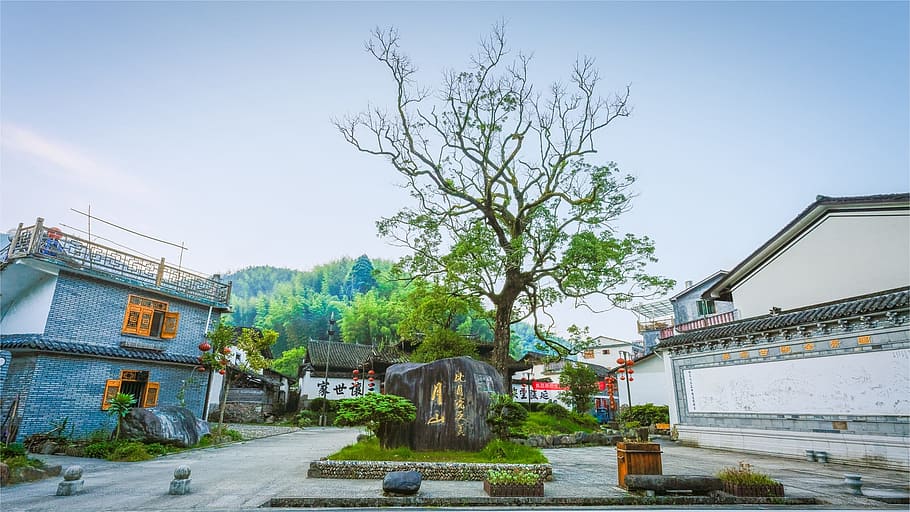Tourism at the Chen Clan Ancestral Hall has seen steady growth due to its rich historical significance and the magnificent display of traditional Chinese arts and crafts, including wood carving, stone carving, clay sculpture, and pottery. The hall's fame spread internationally, and it became a must-visit attraction for anyone visiting Guangzhou. Today, the Chen Clan Ancestral Hall is a popular tourist attraction and a symbol of Guangzhou’s cultural heritage. It houses the Guangdong Folk Art Museum, which showcases traditional crafts such as embroidery, ceramics, and wood carving. The hall also hosts cultural events and exhibitions, allowing visitors to learn about the region’s history and traditions.
Browse 50 chen clan ancestral hall photos and images available, or start a new search to explore more photos and images. Chen Clan Ancestral Hall holds significant cultural importance as a symbol of Cantonese heritage and craftsmanship. It represents the social and educational systems of late imperial China, particularly the importance of clan associations and preparation for imperial examinations. Today, it serves as a museum of folk art, preserving and showcasing the rich artistic traditions of the Lingnan region. The hall’s architecture and decorations provide invaluable insights into the beliefs, values, and aesthetic preferences of 19th-century Guangdong society. It features both the style of general Chinese architecture and that of the Cantonese artwork ornaments.
Our mission is to provide comprehensive, up-to-date, and practical travel tips and recommendations for those exploring this vast and diverse country. An exit from the Chen Clan Academy metro station deposits you right at the door of the complex. The free standing gate which we saw (photo above) is a staple of travel posters and coffee table books about Guangzhou. I’d seen this photo of the gate in a book in our hotel room, and had no idea where it was. Rich in value and assisting in research, the museum excels in displaying artefacts, and handicrafts such as pottery.
Funded by contributions from the prominent Chen family, it served as a place for ancestor worship and accommodation for family members traveling for imperial examinations. Explore Seoul's luxury haven with our guide to the best 5-star hotels, offering opulent experiences and exceptional services. Step onto the busy sidewalks and get caught up in the history and vastness of Manila. This sprawling metropolis is the capital of the Philippines and boasts a unique mix of colonial architecture and ultra-modern skyscrapers. If travelers are searching for a location that’s rich in history and attractions and is also filled with top accommodation offerings, then Manila is the city for them.
During the late Qing Dynasty era, a man called Chen took part in the highest imperial examination, achieved third place, and presented with a distinguished office title. The entrance is past these grand doors with their painted dwarpalas (heng ha er jiang in Mandarin). I suppose that by the late 19th century CE every one wanted their doors to be guarded by such guardians. Space must have been too precious to install the statues that earlier would guard temple doors. I was so engrossed in looking at the arms and armour carried by the dwarpala that I nearly missed the lion-head knockers on the doors. The Chen Clan Ancestral Hall Gardens are in front of the Chen Clan Academy and function as a prelude to what will happen once you get inside the enclosure.
‘We will brief about the craft of brick carving, wood carving, stone carving, clay sculpture, pottery sculpture and grey sculpture.’ Chen Clan Ancestral Hall is also known as Chen’s Academy. As the name suggests, it was the clan and academy of people who share the surname of Chen across 72 counties of Guangdong Province. As the largest clan ancestral hall in Guangdong Province, it provides abundant and the most representative works of Lingnan folk architecture art.
It stands as a testament to the importance of cultural preservation and education in Chinese society, offering visitors a glimpse into the rich history and traditions of the region. The academy’s cultural and historical significance has earned it a place on the list of UNESCO World Heritage Sites, ensuring its legacy for future generations to appreciate and learn from. Temple of Chen Family, also known as Chen Clan Academy, was built between 1890 and 1894 during the reign of Emperor Guangxu of the Qing dynasty. It was built with donations of the Chen family then spread in 72 counties in Guangdong province. The temple used to provide lodgings for candidates of the Chen family who came to Guangdong to prepare for imperial examinations in Guangzhou.
During a battle on Chapter 197, he was almost crippled and his martial spirit shattered in his dantian. Little did he know that his martial spirit is still alive and was divided into 361 little pieces. The potential of the Azure Dragon Martial Spirit can fully unleash if the owner has a strong physical body. It is also the reason why Xiao Chen was not able to awaken his martial spirit in the beginning. The Azure Dragon Martial originally had an elemental attribute of Wood.
 When the imperial examinations were eventually abolished in 1905, the building was turned into a practical school for Chen clan students. The most unforgettable thing in chen clan ancestral hall guangzhou Clan Ancestral is the colorful roof. It is the Stucco relief that widely used in architectural decoration of PRD(Pearl River Delta).
When the imperial examinations were eventually abolished in 1905, the building was turned into a practical school for Chen clan students. The most unforgettable thing in chen clan ancestral hall guangzhou Clan Ancestral is the colorful roof. It is the Stucco relief that widely used in architectural decoration of PRD(Pearl River Delta).





